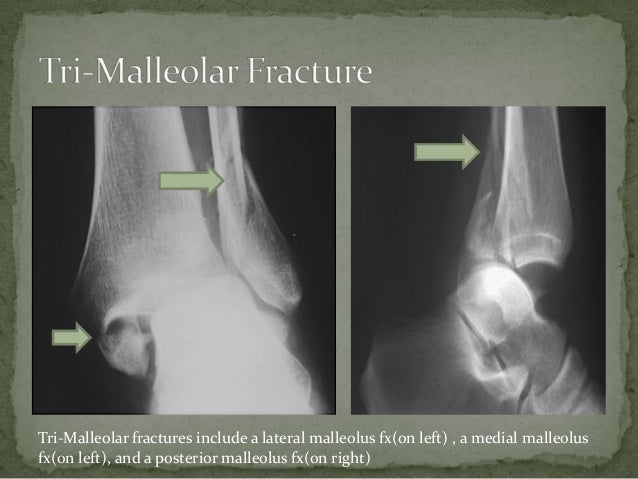

Initial treatment involves the realigning and stabilizing of the bones by your physician, and is performed in the hospital emergency room or, if needed, with surgery. If you have an ankle fracture, treatment will depend on how many bones are broken, and if it is a simple, complex, or compound fracture.
Make recommendations for additional care with an orthopedic physician or emergency department. Instruct you to walk without putting weight on the injured ankle, using crutches or a walker. Instruct you to keep the involved ankle elevated to control swelling. Immobilize your ankle by wrapping it with an ace wrap, or applying a stirrup brace to limit motion and control swelling. Instruct you in acute injury care using the RICE formula: rest, ice, compression, and elevation. If you see your physical therapist after your injury and an ankle fracture is suspected, your physical therapist will: A compound fracture also involves a risk of infection When a fracture involves several broken bones or the bones do not remain lined up, the fracture is considered to be unstable and requires immediate treatment. The soft tissue surrounding the broken bone is severely damaged. Splinters or multiple small pieces of bone are found at the fracture site. The 2 parts of the fractured bone do not line up. The pieces of the fractured bone remain lined up. The severity of the fracture is classified as: Three bones are broken, the fibula, tibia, and the posterior malleolus (the tibia at the back of the foot). Two bones are broken, the fibula and the tibia. 
Only the bone on the inside of the ankle, the tibia, is broken. Only the bone on the outside of the ankle, the fibula, is broken. The classifications based on the number of bones broken are: There are several types of ankle fractures, and 1, 2, or 3 bones may be fractured. An ankle fracture is a completely or partially broken bone on 1 or both sides of the ankle joint.






 0 kommentar(er)
0 kommentar(er)
